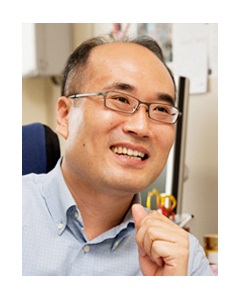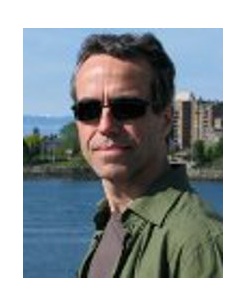Program
Conference Program
| Day One | Thursday, Apr.16, 2015 Lecture Hall, FIT |
| 09:00 – 09:10 | Opening |
| 09:10 – 09:55 | Invited talk I: Structure-preserving Image Smoothing Seungyong Lee Chair: Nadia Magnenat-Thalmann
|
| Session 1 | Vision Focusing on Human
Chair: Jianfei Cai
|
| 09:55 – 10:20 | Similarity Metric Learning for Face Verification Using Sigmoid Decision Function Xiaonan Hou, Shouhong Ding, and Lizhuang Ma |
| 10:20 – 10:45 | Similarity Learning with Humans in the Loop Chong Cao, and Haizhou Ai |
| 10:45 – 11:00 | Coffee break |
| Session 2 | Image Enhancement
Chair: Seungyong Lee
|
| 11:00 – 11:25 | PhotoPrev: Unifying Context and Content Cues to Enhance Personal Photo Revisitation Li Jin, Gangli Liu, Liang Zhao, and Ling Feng |
| 11:25 – 11:50 | A Nonlocal Gradient Concentration Method for Image Smoothing Qian Liu, Caiming Zhang, Qiang Guo, and Yuanfeng Zhou |
| 11:50 – 12:15 | Adaptive Sparse Coding on PCA Dictionary for Image Denoising Qian Liu, Caiming Zhang, Qiang Guo, Hui Xu, and Yuanfeng Zhou |
| 12:15 – 12:40 | Least-Square Images for Edge-preserving Smoothing Hui Wang, Junjie Cao, Xiuping Liu, Jianmin Wang, and Tongrang Fan |
| 12:40 – 14:00 | Lunch |
| Session 3 | Geometry
Chair: Guoping Wang
|
| 14:00 – 14:25 | SymmSketch: Creating Symmetric 3D Free-form Shapes from 2D Sketches Yongwei Miao, Feixia Hu, Xudong Zhang, Jiazhou Chen, and Renato Pajarola |
| 14:25 – 14:50 | 3D Ear Shape Matching Using Joint α-Entropy Xiaopeng Sun, Lu Wang, Feng Han, and Xiaopeng Wei |
| 14:50 – 15:15 | Interactive mesh cloning driven by boundary loop Qian Guiping, Tang Ming, Tong Ruofeng, Zhang Xiaohong, Chu Shaowei, and Pan Ruifang |
| 15:15 – 15:40 | Stretch-minimizing Volumetric Parameterization Yao Jin, Jun Sun, Jieyi Zhao, and Ruofeng Tong |
| 15:40 – 16:00 | Coffee break |
| Session 4 | Animation and Simulation
Chair: Lin Lv
|
| 16:00 – 16:25 | Fast SPH Simulation for Gaseous Fluids Bo Ren, Xiao Yan, Chenfeng Li, Tao Yang, Ming Lin, and Shi-Min Hu |
| 16:25 – 16:50 | Spectral Animation Compression Chao Wang, Yang Liu, Xiaohu Guo, Zichun Zhong, Binh Le, and Zhigang Deng |
| 16:50 – 17:15 | Monocular Video Guided Garment Animation Faming Li, Xiaowu Chen, Kan Guo, Qiang Fu, Lin Wang, Bin Zhou, and Feixiang Lu |
| 17:15 – 17:40 | GPU Accelerated Real-time Collision Handling in Virtual Disassembly Peng Du, Jieyi Zhao, Zhendong Wang, and Yigang Wang |
| 18:00 – 20:00 | Banquet |
| Day Two | Friday, Apr.17, 2015 Lecture Hall, FIT |
| 09:00 – 09:45 | Invited talk II: Recognising Objects in Art and Photographs Peter Hall Chair: Ralph Martin
|
| Session 5 | Video Processing and Editing
Chair: Xiaowu Chen
|
| 09:45 – 10:10 | Salt and Pepper noise removal in video based on low rank matrix recovery Yongxia Zhang, Caiming Zhang, and Yi Liu |
| 10:10 – 10:35 | Efficient Video Cutout by Paint Selection Yun Zhang, and Yanlong Tang |
| 10:35 – 10:50 | Coffee break |
| Session 6 | Image Editing and Processing
Chair: Ruofeng Tong
|
| 10:50 – 11:15 | Edge-Preserving Image Decomposition via Joint Weighted Least Squares Pan Shao, Shouhong Ding, and Lizhuang Ma |
| 11:15 – 11:40 | Enlarging Image by Constrained Least Square Approach with Shape Preserving Fan Zhang, Xin Zhang, Xueying Qin, and Caiming Zhang |
| 11:40 – 12:05 | Panorama Completion in Street View Zhe Zhu, and Shi-Min Hu |
| 12:05 – 12:30 | A Nonlocal Optimization Framework for Image Colorization Hanli Zhao, Guizhi Nie, Xujie Li, Xiaogang Jin, and Zhigeng Pan |
| 12:30 – 14:00 | Lunch |
| Session 7 | Sampling and Rendering
Chair: Kun Xu
|
| 14:00 – 14:25 | Visual Inspection of Multivariate Volume Data based on Multi-class Noise Sampling Zhiyu Ding, Ziang Ding, Weifeng Chen, Haidong Chen, Yubo Tao, Xin Li, and Wei Chen |
| 14:25 – 14:50 | Poisson Disk Sampling through Disk Packing Guanghui Liang, Lin Lu, Zhonggui Chen, and Chenglei Yang |
| 14:50 – 15:15 | Coherent Photon Mapping on the Intel MIC Architecture Chun-Meng Kang, Lu Wang, Pei Wang, Yan-Ning Xu, Xiang-Xu Meng |
| Session 8 | Fast Presentation for Posters (3 minutes each)
Chair: Songhai Zhang
|
| 15:15 – 15:30 |
Anisotropic Density Estimation for Photon Mapping Fujun Luan, Lifan Wu, and Kun Xu Pairwise Constraint Propagationvia Low-Rank Matrix Recovery Zhenyong Fu, Yun Li, Yunyun Wang, Xianzhong Long, Jian Zhou, and Hua Dai Image Recoloring using Geodesic Distance based Color Harmonization Li Xujie, Hanli Zhao, Guizhi Nie, and Hui Huang New Operators for Describing Image Texture Fangjun Huang, Xiaochao Qu, Hyoung Joong Kim, and Jiwu Huang Semantic Movie Summarization based on String of IE-RoleNets Wen Qu Disparity-Constrained Stereo Video Retargeting Liu Yi, Lifeng Sun, and Shiqiang Yang |
| 15:30 – 16:00 | Coffee break and poster discussion |
| Session 9 | Stylization
Chair: Peter Hall
|
| 16:00 – 16:25 | Region-based Structure Line Detection for Cartoons Xiangyu Mao, Xueting Liu, Tien-Tsin Wong, Xuemiao Xu |
| 16:25 – 16:50 | Text-aware Balloon Extraction from Manga Xueting Liu, Chengze Li, Haichao Zhu, Tien-Tsin Wong, Xuemiao Xu |
| 16:50 – 17:15 | Stylized strokes for coherent line drawings Liming Lou, Lu Wang, and Xiangxu Meng |
| 17:15 – 17:40 | Artistic Low Poly Rendering for Images Meng Gai, and Guoping Wang |
| 17:40 – 18:00 | Closing session |
Prof. Seungyong Lee

Talk Title:
Structure-preserving Image Smoothing
Talk Abstract:
Structure-preserving image smoothing is an essential operation with a variety of applications in computational photography and image analysis. Such an operation decomposes an image into prominent structure and fine-scale detail, making it easier for subsequent image manipulation such as tone mapping, detail enhancement, visual abstraction, scene understanding, and other tasks. In this talk, I will first review recent structure-preserving smoothing operators that can be classified into local filtering and optimization based solutions. I will then introduce a novel structure-preserving image smoothing operator called bilateral texture filter, which is a simple modification of the original bilateral filter. It performs local patch-based analysis of texture features with the central idea of patch shift and incorporates the analysis results into the range filter kernel. The talk will be concluded with a few applications of structure-preserving image smoothing.
Short Bio:
Seungyong Lee is a professor of computer science and engineering at the Pohang University of Science and Technology (POSTECH), Korea. He received the BS degree in computer science and statistics from Seoul National University in 1988 and the MS and PhD degrees in computer science from the Korea Advanced Institute of Science and Technology (KAIST) in 1990 and 1995, respectively. From 1995 to 1996, he worked at the City College of New York as a postdoctoral researcher. Since 1996, he has been a faculty member of POSTECH, where he leads the Computer Graphics Group. During his sabbatical years, he worked at MPI Informatik (2003~2004) and the Creative Technologies Lab at Adobe Systems (2010~2011). His technologies on image deblurring and photo upright adjustment have been transferred to Adobe Creative Cloud and Adobe Photoshop Lightroom. His current research interests include image and video processing, non-photorealistic rendering, and 3D scene reconstruction.
Prof. Peter Hall

Talk Title:
Recognising Objects in Art and Photographs
Talk Abstract:
People posses an astonishing ability that is currently beyond even the best Computer Vision algorithms: people can recognise objects regardless of how they are depicted. People can see a dog as a dog whether it is photographed, painted, drawn, etc. Young children draw recognisable things – their parents, their home, their pets; and young children can recognise things in real life having seen only a simple drawing. Computers can do none of these things. I will explore the problem of recognition regardless of depiction. I will show there is an important literature gap to be addressed, and discuss why filling this gap is difficult. State of the art methods will be explained, and their weaknesses exposed. Applications that might be enabled as a result of filling the literature gap will be explored.
Short Bio:
Dr. Peter Hall is a reader (associate professor) in the department of Computer Science, University of Bath. He is also director of the Media Technology Research Centre, also at Bath. He is interested in automatically processed real photographs and video into art or into 3D animated models. He founded and was chair of the Vision, Video, and Graphics Network. The network ran conferences and meetings as well as providing small grants to support research in the “convergence” area of VVG. He has served as an elected member of the British Machine Vision Association executive committee since 2003. He is also a member of the steering committee of the Computational Aesthetics series of conferences, being co-chair of the technical programme in 2009. He is an EPRSC college member, and review for international funding bodies too.
Workshop associated with CVM 2015
There will be a workshop on Visual Computing for Social and Cognitive Robots on April 15, invited speakers include: Jianfei Cai (NTU, Singapore), Lizhuang Ma(Shanghai Jiaotong University), Nadia Magnenat-Thalmann(NTU Singapore and University of Geneva), Dinesh Manocha(UNC), Jia Pan(The University of Hong Kong), Ruofeng Tong(Zhejiang University), Charlie Wang(The Chinese University of Hong Kong), Hongbin Zha(Peking University).
All participants are welcome to attend the workshop.